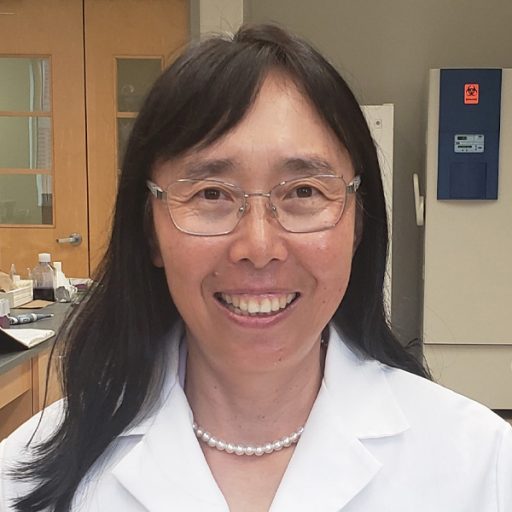FSU experts: Breast Cancer Awareness Month: Understanding breast cancer from molecules to outcomes

Breast cancer is the second most common cancer among women in the United States, according to the Centers for Disease Control and Prevention. About one in eight women will be diagnosed with the disease in her lifetime, making awareness and early detection crucial.
October is Breast Cancer Awareness Month, an opportunity to reflect on the impact of breast cancer and highlight the groundbreaking work of researchers who are shaping the future landscape of treatment.
Florida State University faculty members Qing-Xiang “Amy” Sang and Bonnie Spring approach breast cancer research from different but complementary perspectives. Sang focuses on the molecular and genetic mechanisms that drive the disease, while Spring studies long-term survivorship and the role of lifestyle in improving outcomes.
Sang and Spring are available to speak to the media on their current research findings.

Qing-Xiang “Amy” Sang
Distinguished Research Professor, Department of Chemistry and Biochemistry
Fellow, American Association for the Advancement of Science
qxsang@chem.fsu.edu
Sang’s research focuses on gene and protein biomarkers to improve the detection, monitoring and treatment of breast cancer. She studies molecular clues within proteins that reveal how cancer cells grow, evade the immune system and respond to therapy. Her work has uncovered key immune evasion pathways, highlighting opportunities for new treatments to counteract drug resistance. Her work helps enable earlier diagnosis, more precise treatments and personalized care to extend survival and improve quality of life for patients.
How do proteins guide doctors in understanding and treating breast cancer?
“Proteins act as messengers in the body, controlling how cells grow, divide and repair. In breast cancer, some proteins can become altered or overproduced, serving as early warning signs. For example, proteins like HER2 and hormone receptors can help identify cancer type and guide treatment. Proteins can also reveal how aggressive a tumor may be and how it might respond to therapy. By tracking protein activity, doctors can detect cancer earlier, monitor its spread and adjust treatment. This ‘protein fingerprint’ transforms care from a one-size-fits-all model to more personalized and effective treatment.”
How can these findings impact breast cancer treatment and/or remission?
“Discoveries about cancer-related proteins have already reshaped breast cancer treatment. Targeted drugs now block cancer growth with greater precision and fewer side effects than traditional chemotherapy, while immunotherapies use protein markers to help the immune system better recognize and attack tumor cells. These approaches not only improve survival rates but also offer hope for longer-lasting remission by preventing cancer’s return. Continued study of proteins and the pathways they control is opening the door to combination therapies that can overcome drug resistance, making treatment more durable and effective. Ultimately, these insights equip doctors with the tools to deliver the right treatment to the right patient at the right time.”

Bonnie Spring
Krafft Professor, Department of Behavioral Sciences and Social Medicine
Director, Florida Blue Center for Rural Health Research & Policy
bspring@fsu.edu
Spring studies the long-term health outcomes of breast cancer survivors, focusing on how lifestyle factors such as physical activity, nutrition and stress management can improve quality of life and reduce the risk of recurrence. Her research emphasizes how daily habits can play a critical role in shaping both immediate recovery and lifelong health.
What steps can breast cancer survivors take to improve their long-term health outcomes?
It’s such good news that we’re finally asking this question. It wasn’t until 2006 that the U.S. National Academies of Science advised that quality cancer care involves not only treatment of the disease, but also promotion of the patient’s long-term health and quality of life. When we think about risky lifestyle behaviors — like smoking, being physically inactive or a poor diet — we may think only about how they increase the risk of getting cancer initially. But the same behaviors continue to undermine the health of the person who’s had cancer, increasing their risk of developing a new cancer, heart disease or diabetes. To help empower the growing number of cancer survivors who want to regain mastery over their health and quality of life, the National Comprehensive Cancer Network’s 2024 guidelines provide recommendations for all survivors and their care providers.
What preventive measures can individuals take to reduce the risk of developing breast cancer?
The main way to reduce breast cancer risk is by making healthy lifestyle choices— not smoking cigarettes, limiting or avoiding drinks that contain alcohol, eating a diet rich in fruits, vegetables, beans and whole grains, and limiting red meats and processed foods. Even though it’s challenging to achieve in our calorie-dense food environment, maintaining a healthy weight is a really important and effective strategy. Also difficult, given our desk-bound lifestyles, is regularly getting at least 150 minutes per week of moderate to vigorous physical activity (a workout intensity at which you can talk but not sing). If you’re exercising outdoors or at a high altitude, don’t forget to wear protective clothing or slather up with sunscreen because melanoma (the most dangerous form of skin cancer) can be fatal if not caught early. The best news of all is that our nation has a growing will to make America healthy and a growing toolbox of health-promoting technologies and evidence-based interventions that reduce cancer risk and promote survival.

